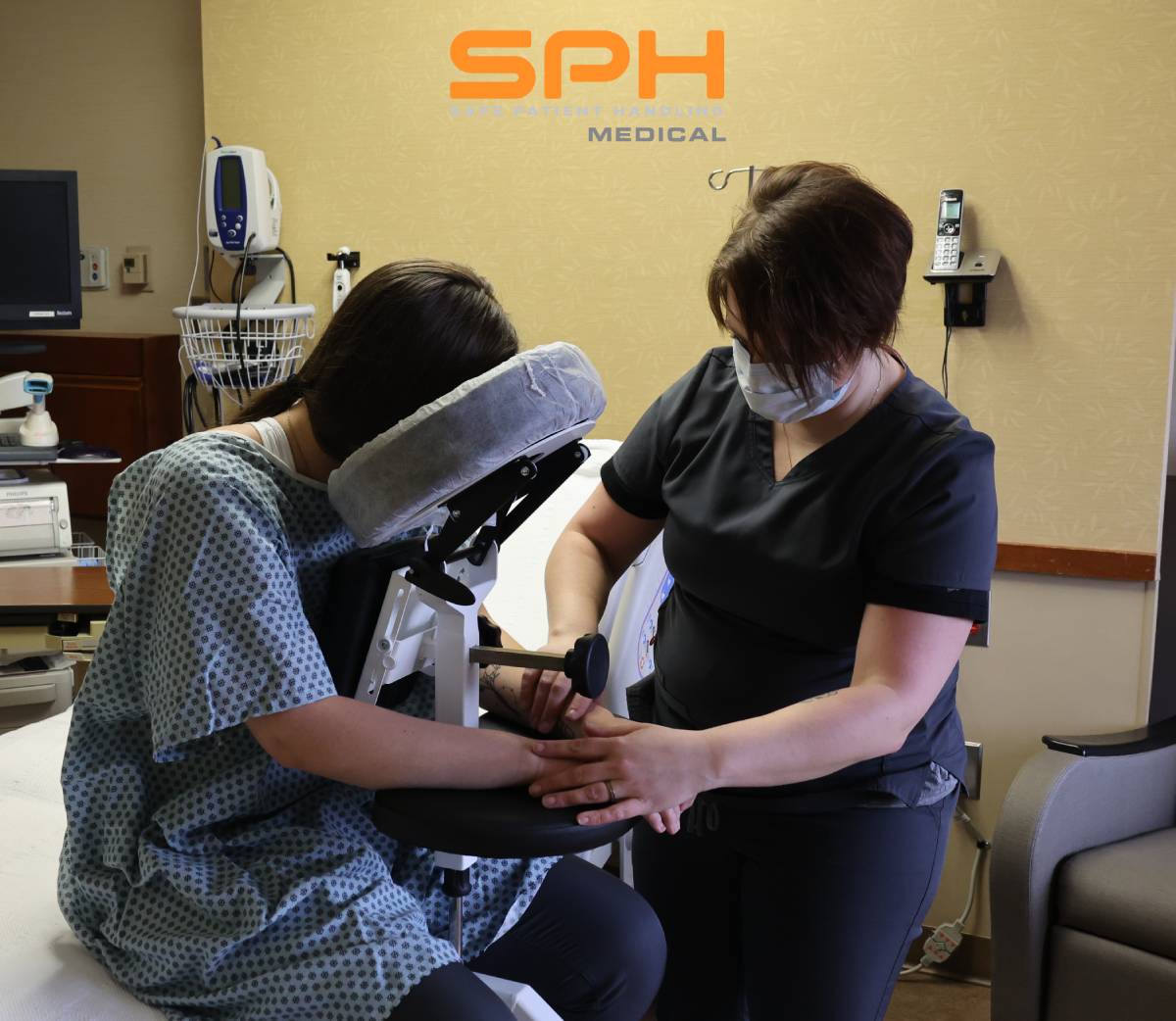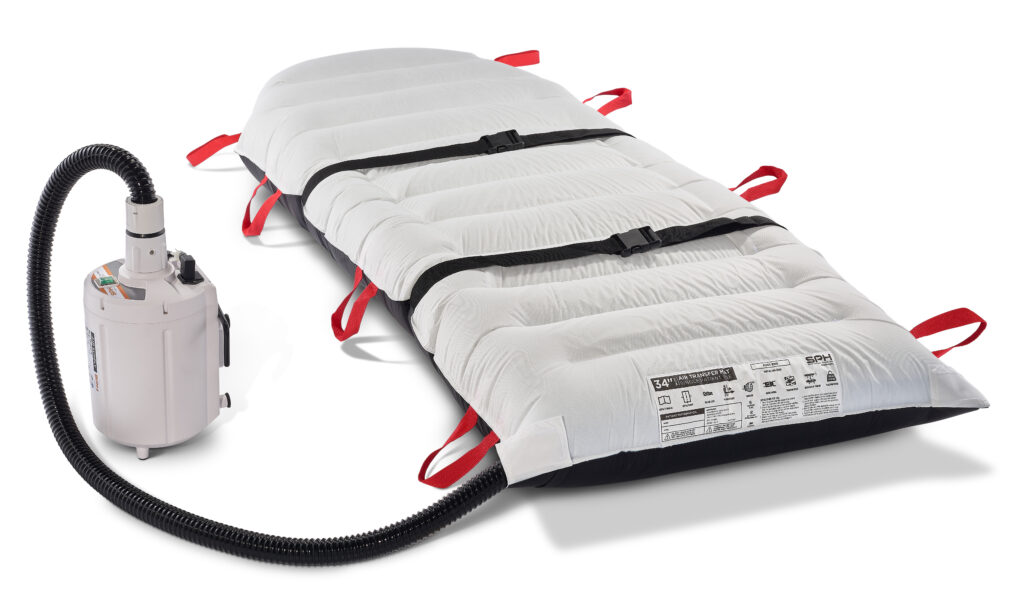Nurses face a high risk of sustaining a patient repositioning injury when working in any department hospital setting, even when practicing even the most common patient handling tasks. The two most common tasks where injuries take place are when boosting a patient up in bed or undertaking a lateral transfer. Many of the in bed patient care tasks that nurses perform require lifting, pushing, pulling, and holding that can cause injury. This article will discuss the two most effective evidence based solutions to address repositioning in bed and lateral transfers.
The Risk of Performing a Lateral Transfer
Lateral transfers are predictable and the cause of many injuries to nursing staff, including back injuries, sprains, strains, or tears. These repetitive tasks put nurses at a higher risk for injury and using the old-fashioned draw sheet or plastic slider board don’t do much to make the situation safer. When using the older low tech solutions like a draw sheet or slider board, friction still exists and nurses have to use excessive force to push, pull, and transfer patients.
Boosting up in Bed is a Nursing Nightmare
Boosting a patient happens countless times a day in every nursing unit in the country. But, this traditionally manual bed-sheet task causes many injuries due to the high rate of repetition, increase in morbid obesity, awkward body posture, friction and other safety factors.
According to the Bureau of Labor Statistics, patient handling injuries among nurses cost almost 1 billion dollars annually, with over 200,000 reported injuries every year. Of course, this isn’t news to nurses. As many as 20% of nursing employees leave direct care positions because of the associated risks.
Reduce Your Risk of Injury
With the use of medical technology, like the breathable repositioning sheet and SPH Medical’s air transfer system, nurses can reduce the amount of staff needed for patient-handling tasks from as many as eight to one or two individuals.
The breathable repositioning sheet is a major step forward in safety for patients and nurses alike. Designed out of a breathable material the sheet can stay under patients for extended periods of time allowing nursing staff to boost, turn, and transfer patients using an overhead or mobile lift system. Unlike other repositioning sheets out on the market the SPH Medical breathable repositioning sheet does not have straps going across the underside of the sheet. This innovative design means less pressure on patients’ skin during their length of stay. Nurses across the country rely on the SPH Medical breathable repositioning sheet for all day Safe Patient Handling and care.
The SPH Medical Air Transfer System is a single patient use Air Transfer Mattress that is compatible with most manufacturer’s air supplies or blowers. The air supply inflates the mattress and a thin cushion of air underneath an inflatable mattress, which helps to reduce friction. It is recommended by AORN for virtually all adult patients, even post-surgery.
Air-assisted transfer systems and breathable repositioning sheets are the gold standard in hospitals now because they directly addresses the patient repositioning tasks that cause hundreds of thousands of nurses to hurt themselves every year. A clinical evaluation from the American Association of Occupational Health Nurses journal found that nurses rated air-assisted systems higher than other methods.
Accessible and Easy to Manage
Single patient use transfer mats keep the unit, the nurse, and the patients more comfortable and safer. Because they are disposed of after patient use, it is easy to track the inventory and there is no need to worry about the laundry system or other procedures that might keep transfer units from being available. The kits can also be kept on-unit so they can easily be used throughout the day.
It’s Better for the Patient, Too
Since the mattress is a single patient use item, the mattress is disposed of which reduces the risk of cross-contamination between patients and the risk of possible infections. It’s safer because they are being transferred or boosting up in bed more gently and staff are using less physical effort.
SPH Medical wants to make nurses’ lives easier by focusing on reducing the risk of nursing injury. A nurse should be able to go home and enjoy her personal time without pain or injury-related medical issues.















